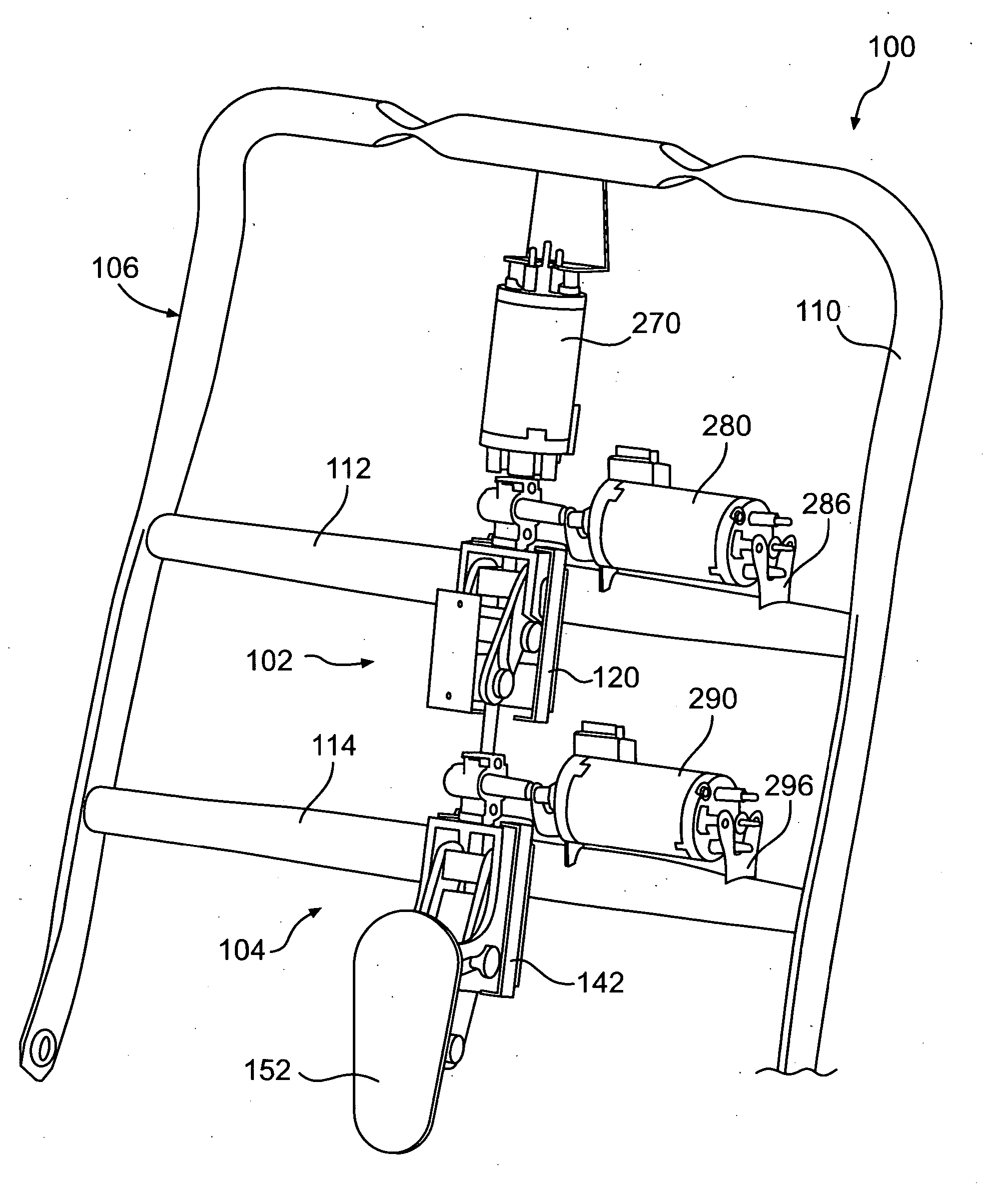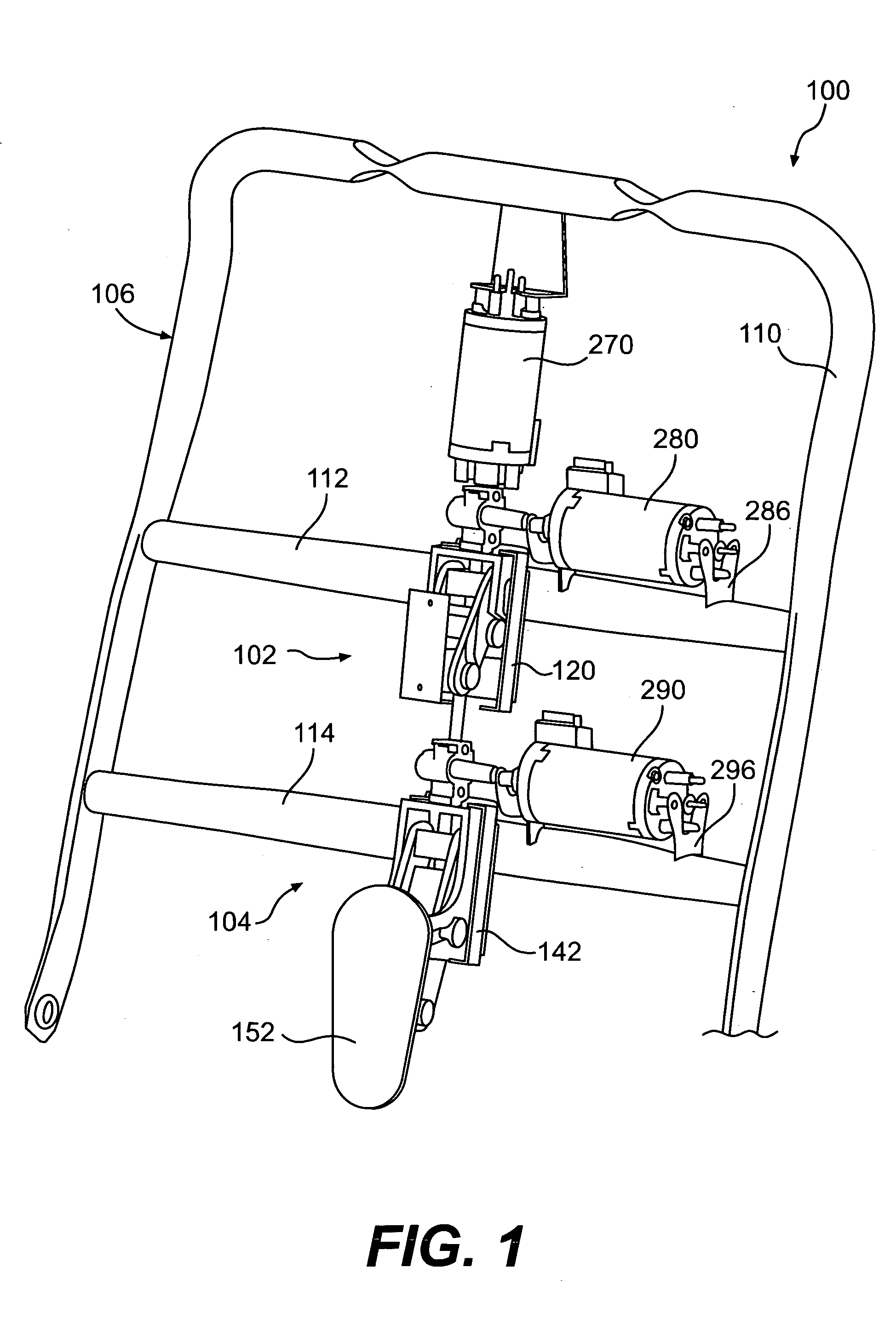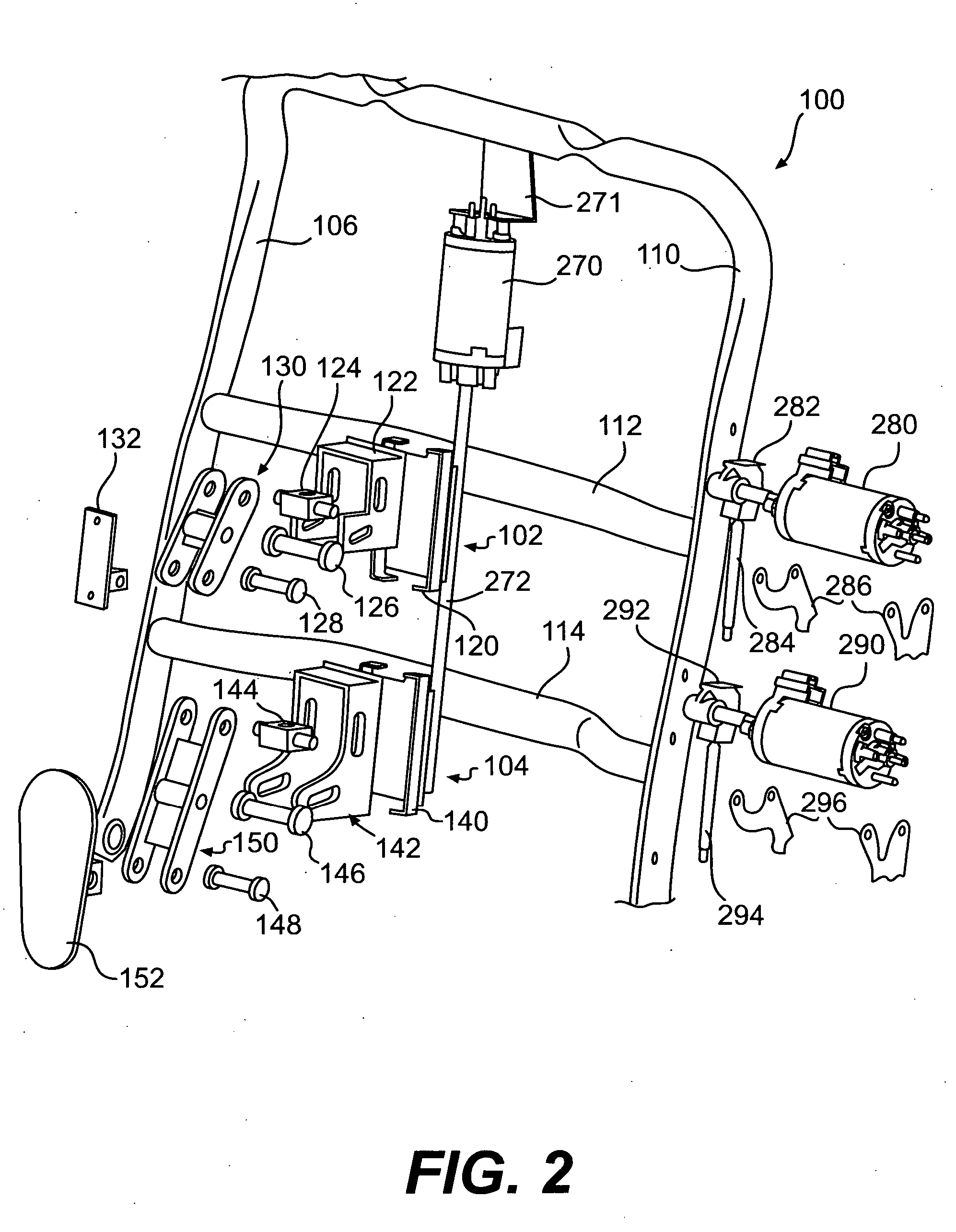Adjustable seating support system
a support system and adjustable technology, applied in vehicle arrangements, medical science, non-surgical orthopedic devices, etc., can solve the problems of user spine collapse, chronic and severe back pain, collapse, etc., to improve user efficiency, strength and muscle control, and improve seat effect changes. , the effect of increasing the comfort, endurance and stability of users
- Summary
- Abstract
- Description
- Claims
- Application Information
AI Technical Summary
Benefits of technology
Problems solved by technology
Method used
Image
Examples
Embodiment Construction
[0042] The present invention is described with reference to the drawings in which like elements are referred to by like numerals. The relationship between and functioning of the various elements of this invention are better understood by the following detailed description. However, the embodiments of this invention as described below are by way of example only, and the invention is not limited to the embodiments illustrated in the drawings. It should also be understood that the drawings are not to scale and in certain instances details have been omitted, which are not necessary for an understanding of the present invention. Moreover, it should be noted that the invention described herein includes methodologies that have a wide variety of applications, including, those mentioned previously as well as military, and commercial seating applications.
[0043] Reference can first be made to FIG. 22 which demonstrates, in a very general fashion, the concept of how the adjustable support syst...
PUM
 Login to View More
Login to View More Abstract
Description
Claims
Application Information
 Login to View More
Login to View More - R&D
- Intellectual Property
- Life Sciences
- Materials
- Tech Scout
- Unparalleled Data Quality
- Higher Quality Content
- 60% Fewer Hallucinations
Browse by: Latest US Patents, China's latest patents, Technical Efficacy Thesaurus, Application Domain, Technology Topic, Popular Technical Reports.
© 2025 PatSnap. All rights reserved.Legal|Privacy policy|Modern Slavery Act Transparency Statement|Sitemap|About US| Contact US: help@patsnap.com



